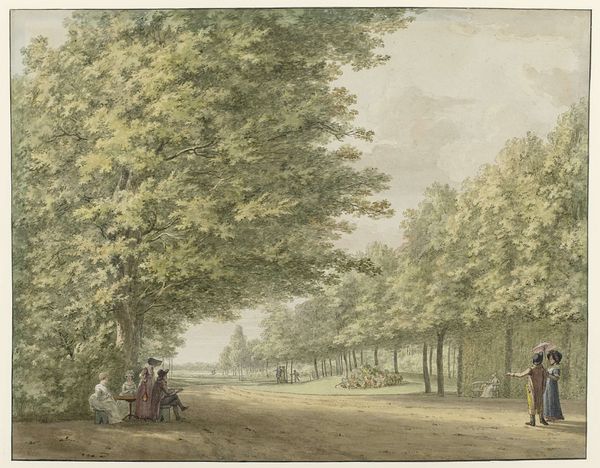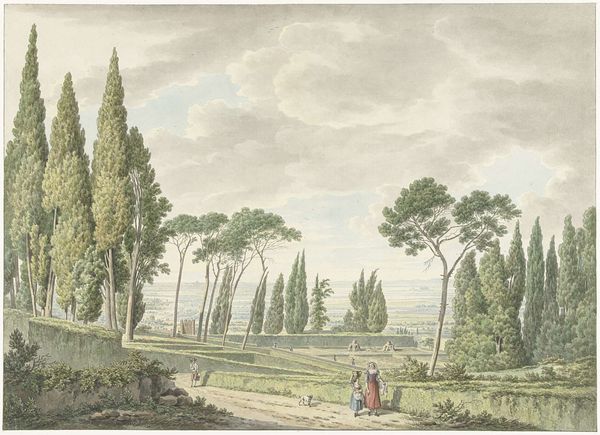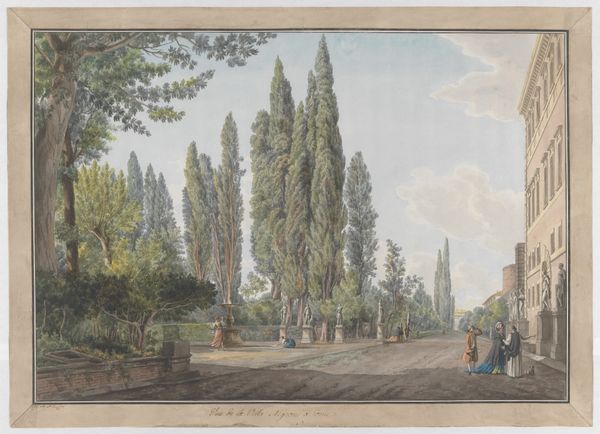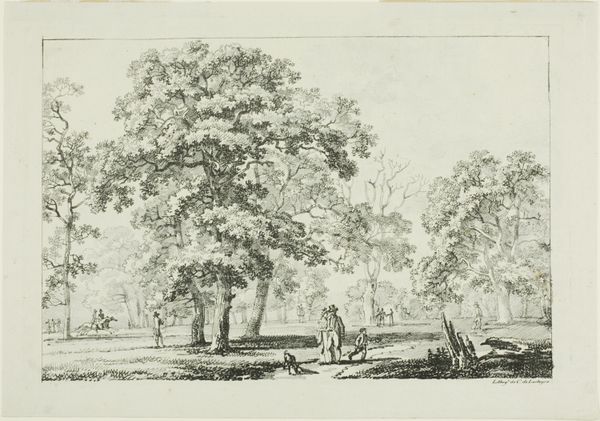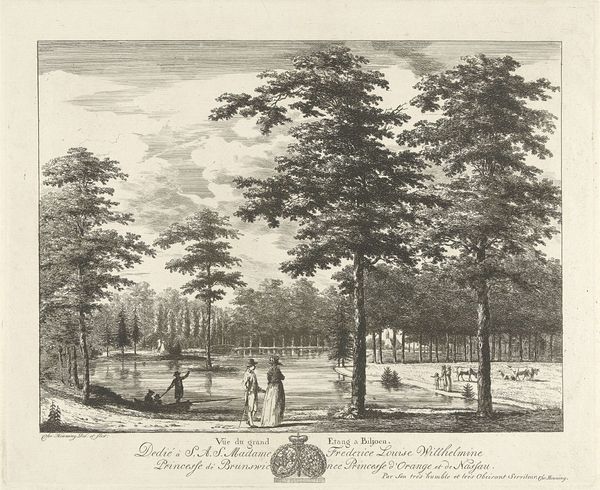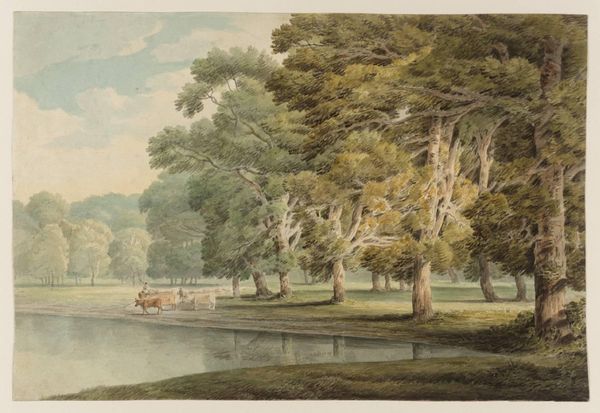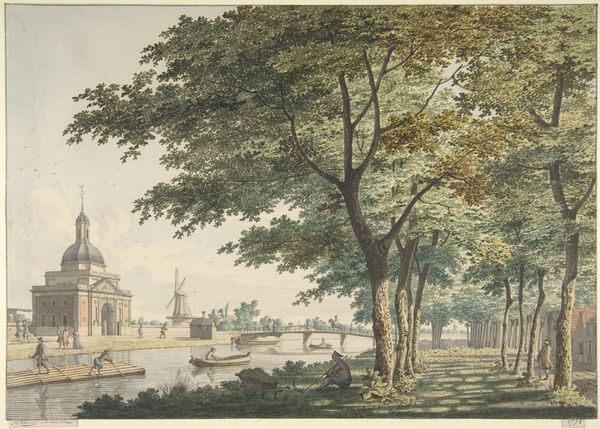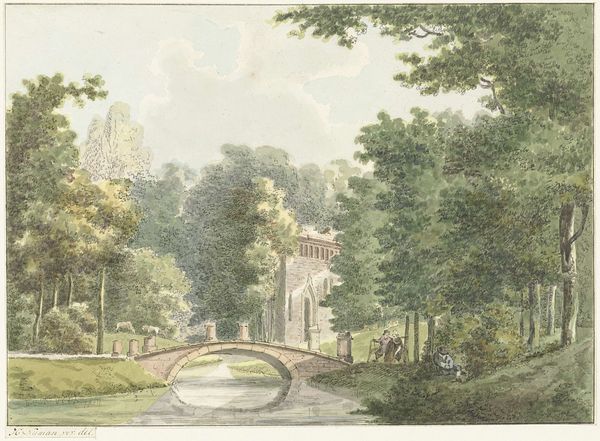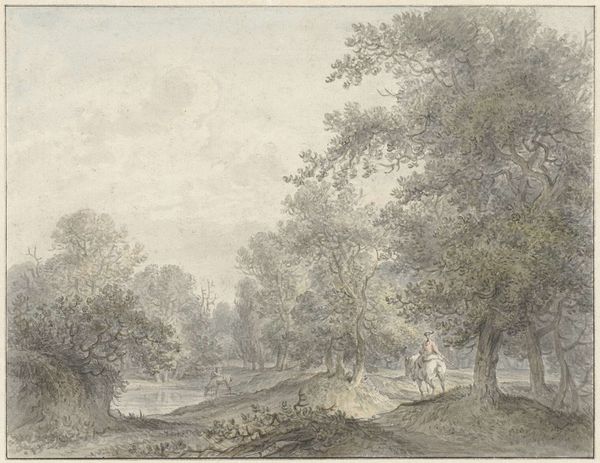
drawing, pen
#
drawing
#
neoclacissism
#
landscape
#
pen
Dimensions: height 356 mm, width 498 mm
Copyright: Rijks Museum: Open Domain
Curator: Today we're looking at a work by Daniël Dupré titled "Wanderers on a terrace of the Villa Conti in Frascati." It's a pen drawing, made in 1791. Editor: My first impression is how airy and bright the piece feels, despite the limited palette. The washes create such delicate tones; there's a real sense of peacefulness. Curator: Dupré was a product of his time. The neoclassical influence is evident, with this portrayal of the elite classes seeking respite in the Roman campagna. We see how landscapes, real and imagined, were tools to discuss ideals of civility and leisure. Editor: Definitely. I find the carefully structured composition particularly interesting. Note how the placement of trees and figures directs the eye across the scene, almost stage-managing a leisurely stroll. It's beautifully balanced. Curator: Consider the political implications of such imagery during this era, especially as revolutionary sentiments bubbled up across Europe. The focus on elite relaxation deflects attention away from growing social unrest, painting an image of serenity when realities were much more complex. Editor: I agree that's a critical layer to explore. Visually, the way he employs the penwork— the subtle hatching that defines the forms— suggests more than simple documentation. Look closely at the variation in the washes creating texture. Curator: Indeed, such details invite deeper engagement. It becomes clear that depictions of nature served political purposes, framing aristocratic life within a specific, idealized historical context. The Italian landscape became synonymous with timeless virtues, conveniently overlooking social stratification. Editor: And while Dupré might have political motives, he did give much care in translating light and atmospheric conditions of the Frascati scene with just simple pen and washes. It still gives a palpable sense of atmosphere. Curator: Absolutely, which is crucial for interpreting how artistic representation, patronage, and political agendas intertwine in the late 18th century. Editor: Analyzing the visual vocabulary, like the framing trees, gives insight to neoclassical tastes and how art mediated understanding nature, culture, and class. Curator: Precisely. Art never exists in a vacuum, even when seemingly depicting placid outdoor life. Editor: I suppose I can come away seeing the Villa Conti through more of a politically informative view. Curator: And perhaps I am reminded not to get bogged down on history, and enjoy how much Dupré made of this piece using such limited resources.
Comments
No comments
Be the first to comment and join the conversation on the ultimate creative platform.
